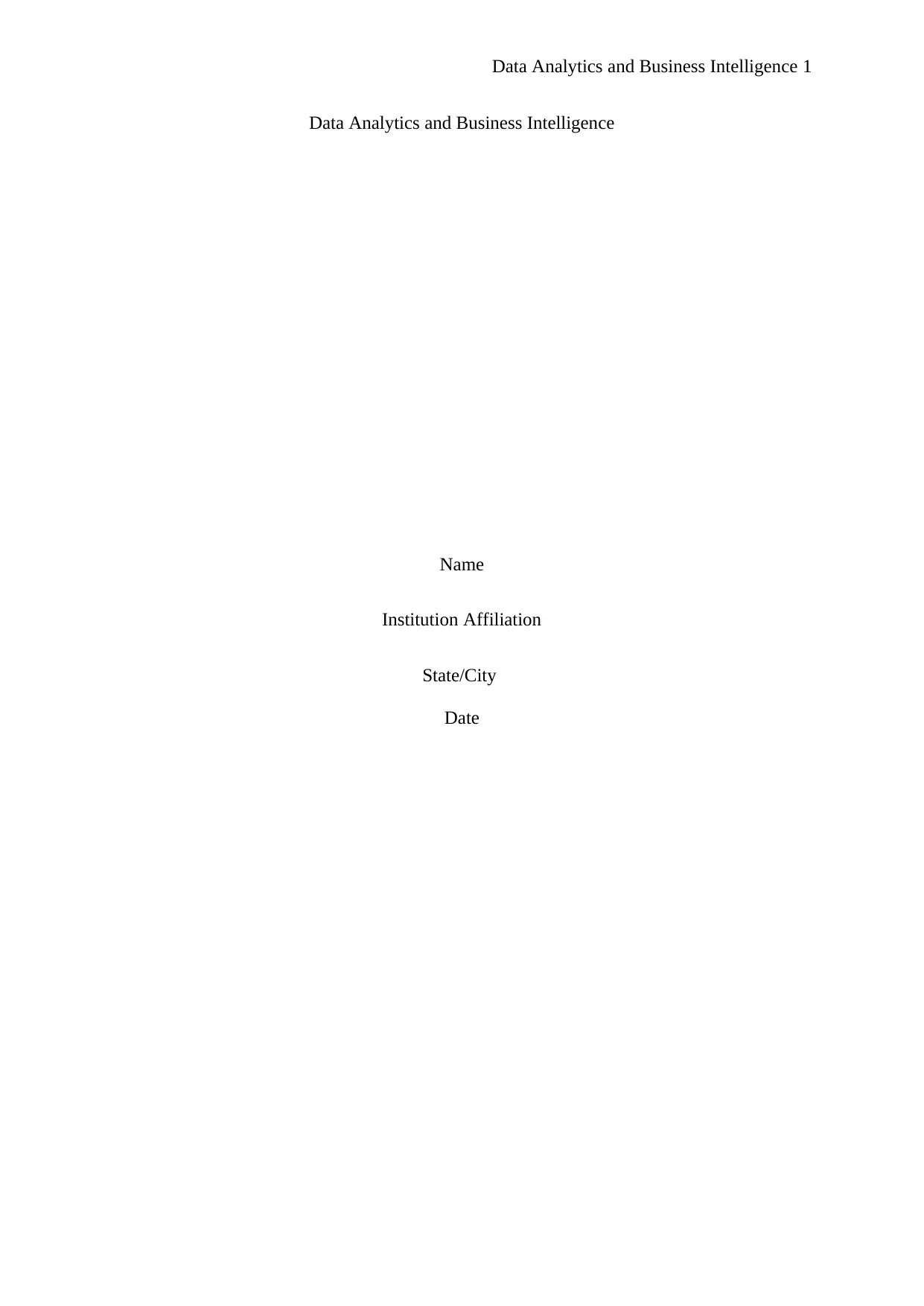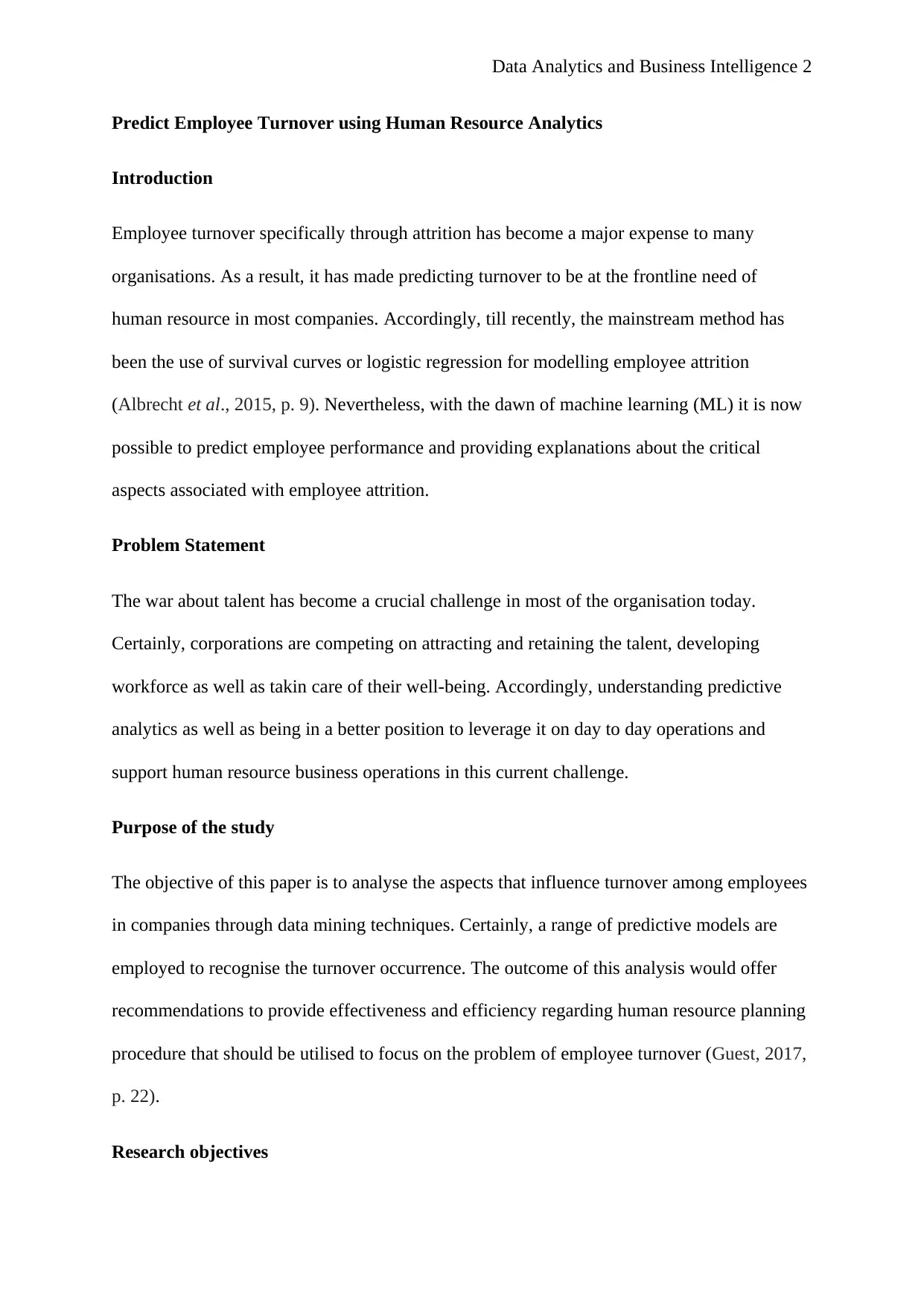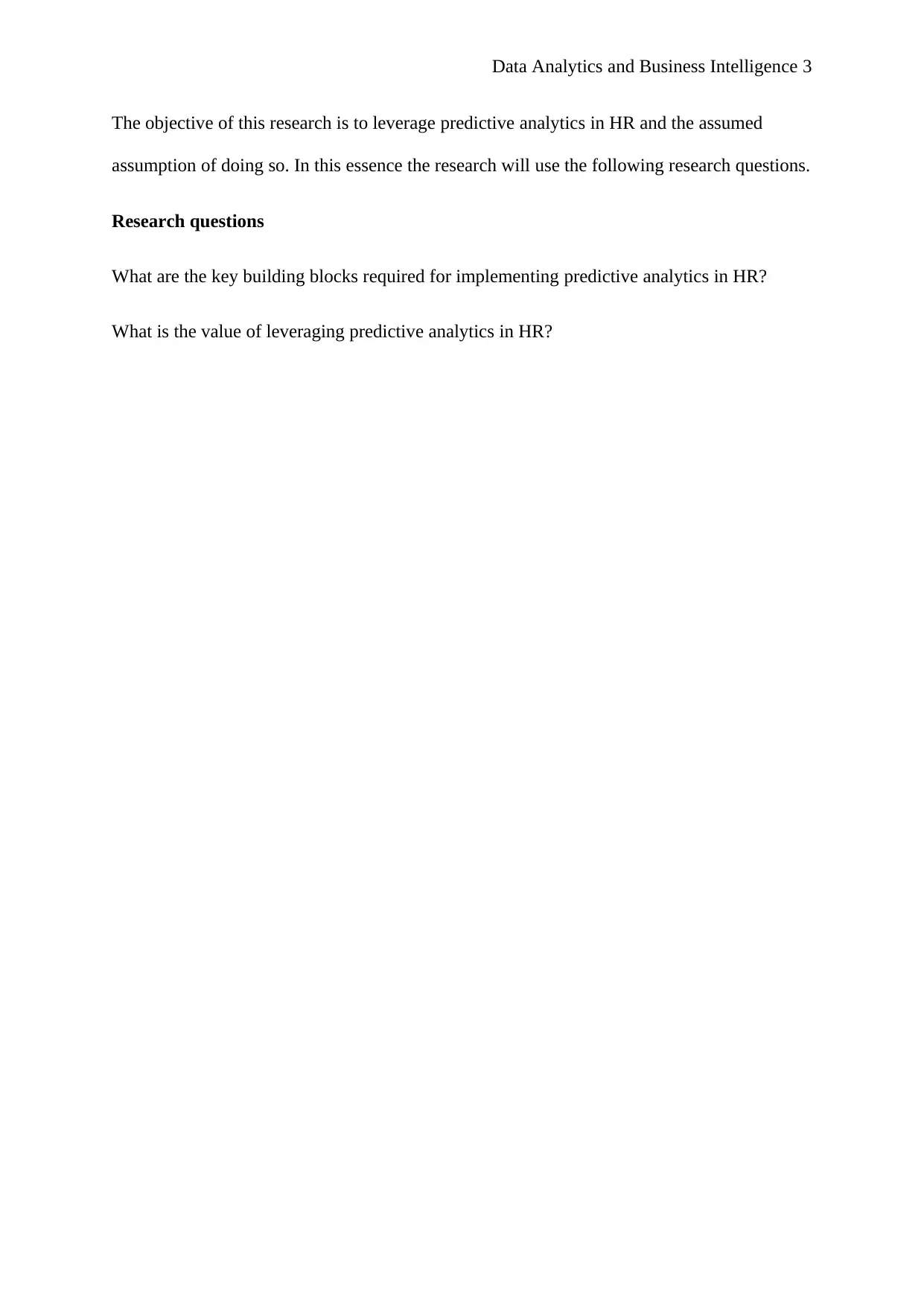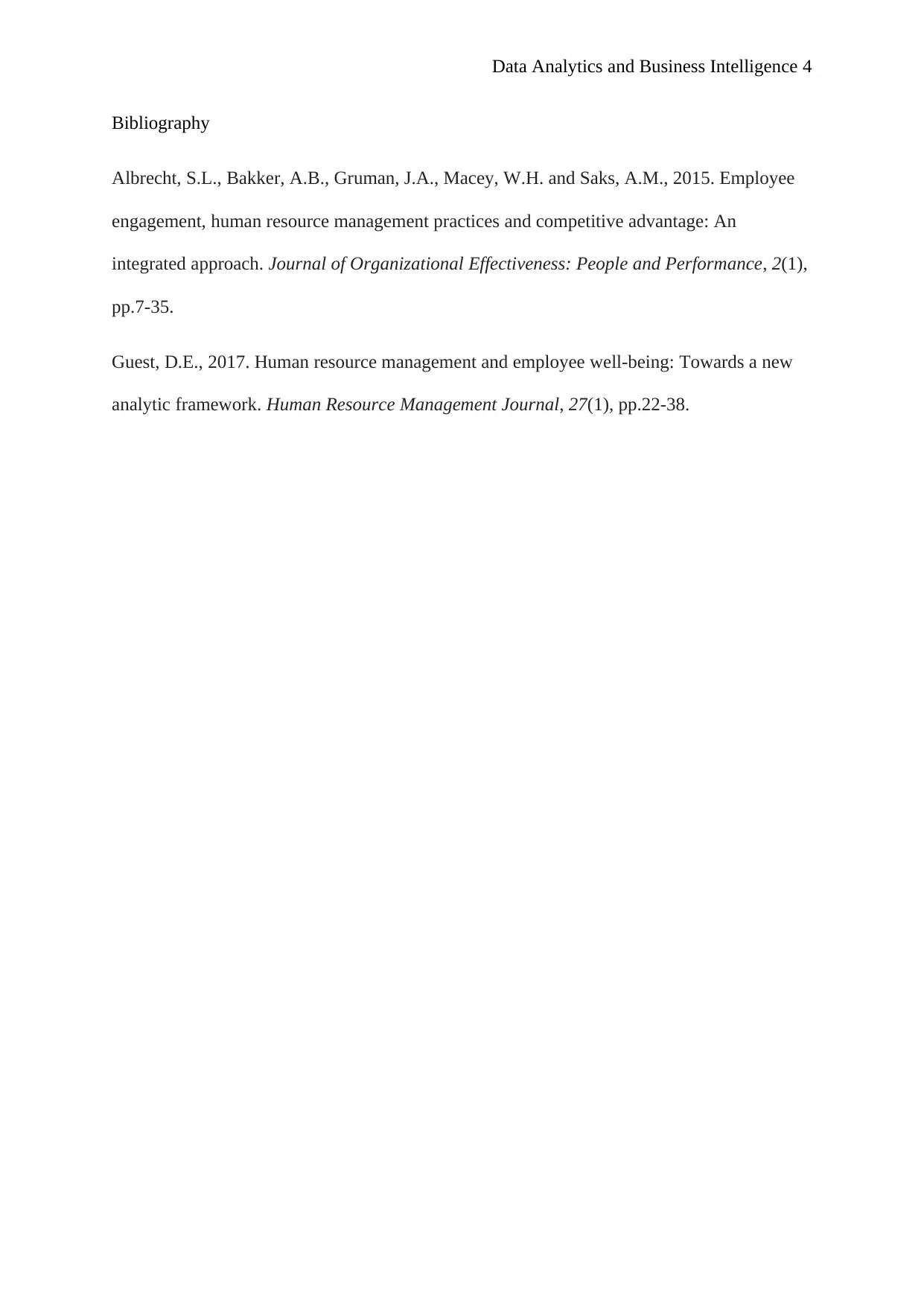HR Analytics and Employee Turnover: A Data-Driven Investigation
VerifiedAdded on 2021/10/09
|4
|424
|172
Report
AI Summary
This report delves into the application of data science and HR analytics to predict employee turnover. It begins by highlighting the significance of employee attrition as a critical issue for organizations. The report discusses the limitations of traditional methods like survival curves and logistic regression, and emphasizes the use of machine learning for predicting employee performance and identifying key factors associated with attrition. The purpose of this study is to analyze the factors influencing employee turnover using data mining techniques, with the goal of offering recommendations for effective human resource planning. The research objectives include leveraging predictive analytics in HR and formulating research questions to understand the essential elements of implementing predictive analytics and its value in HR. The report aims to provide a data-driven approach to understanding and addressing employee turnover, ultimately contributing to improved retention strategies and more effective human resource management.
1 out of 4











![[object Object]](/_next/static/media/star-bottom.7253800d.svg)